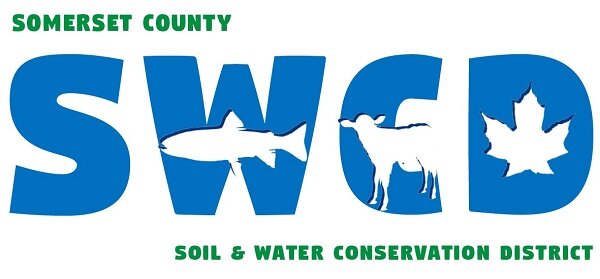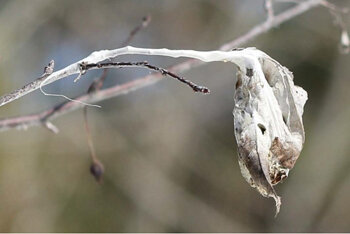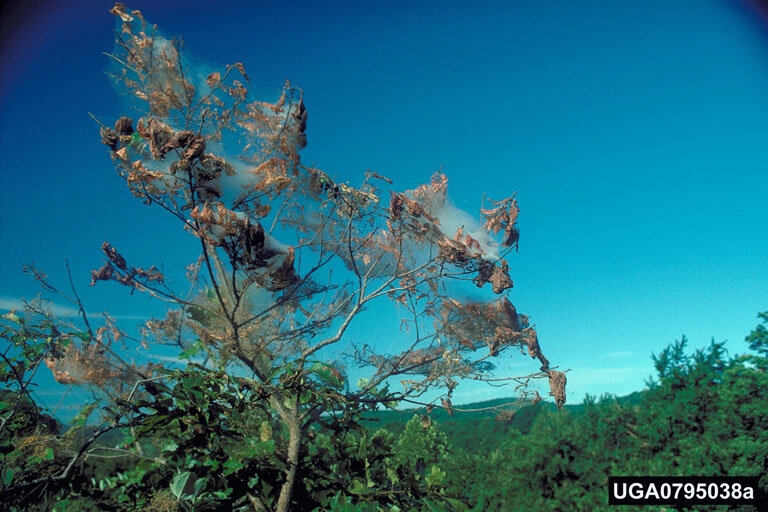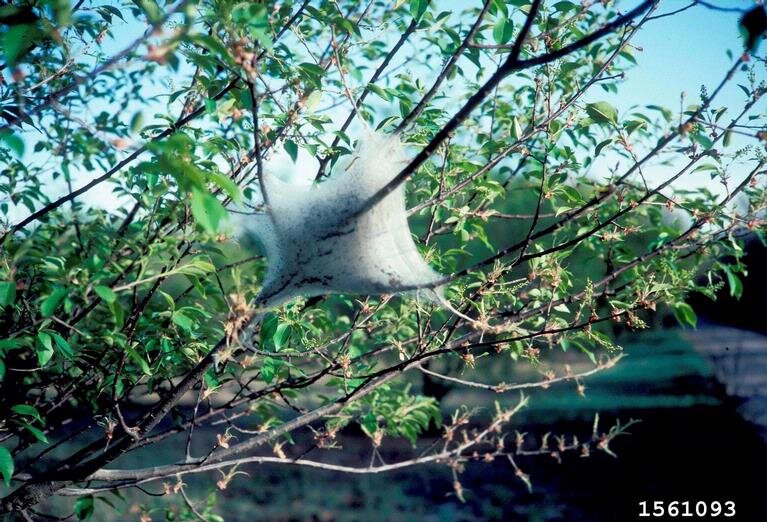UPDATED LINKS & 2021 WINTER WEB SURVEY DATA FEB 8 2022
Most everyone in Maine it seems has heard of browntail moth. A native of Europe, browntail moth (Euproctis chrysorrhoea) has again expanded its range in Maine in recent years. It’s one of our more infamous invasive pests these days, dominating headlines and social media streams in 2019 – so much so that it was left off the invasive pests update at last week’s Forestry Forum hosted by Maine Woodland Owners. When asked in the audience Q&A session about the problematic pest, Maine Forest Service state entomologist Allison Kanoti joked that browntail moth so dominates the press she wants to be sure we don’t forget other current and looming pests, like Emerald Ash Borer, Hemlock Woolly Adelgid or Spotted Lanternfly and so many others.
Awareness of this noxious pest is so high due to its human health impact: browntail moth caterpillar hairs can cause an itchy and uncomfortable rash much like that caused by poison ivy, and for some people, the rash can be quite severe and long-lasting. At high population levels, the caterpillars may completely strip host trees and shrubs of their leaves. Its preferred trees include oak, apple, crabapple, pear, birch, cherry, as well as other hardwoods, and shrubs including shadbush and rosa rugosa. The 2021 winter web survey shows increasing presence along Somerset County’s southern border, and many County towns are on alert.
Feb 8, 2022: The Department of Agriculture, Conservation and Forestry's Maine Forest Service has assembled this browntail moth (BTM) monitoring dashboard to provide information about where we know BTM is located in Maine. From the dashboard, you may zoom in to your location to see the extent of browntail moth webs detected in the 2021 winter web survey.
Browntail moth biology makes winter the safest time to undertake control measures for browntail moth, and its relatively lower numbers in Somerset County means landowners can have a real impact on limiting local populations by taking management action now.
The browntail moth overwinters as larvae in colonies that are enclosed within webbed nests of white silk tightly woven around a leaf in trees or shrubs. The nests are spun in the early fall, contain 25 to 400 larvae, and remain firmly attached to twigs or small branches through the winter and early spring. Winter is the best time to clip webs due to the low risk for exposure to the caterpillars’ toxic hairs, caterpillar dormancy, as well as the high visibility of webs.
What browntail moth winter webs look like:
• 2-5 in. (5-10 cm) long
• white silk tightly woven around a leaf or leaves
• wrap of white silk tying leaf petiole to twig
• small brown hairy larvae within dense silk
• occur more commonly on twig ends of oak, apple, shadbush, cherry
The winter webs of browntail moths are often confused with silken structures formed by other less serious species of moths, notably fall web worm and eastern tent caterpillar.
The Maine Forest Service recommends clipping webs between October and mid-April before caterpillars emerge from winter webs and begin feeding on new leaves. Clipping and destroying webs in the fall and winter can reduce populations. If you find webs within reach, before April clip and destroy the webs by soaking them in soapy water or burning them (the latter requires a burn permit). Viable webs will be at the tips of branches and will shine and glimmer in the sun due to the fresh white silk that holds the web together. Although risk of hair exposure this time of year is low, you should take proper precautions, since remnants of cocoons and cast skins of caterpillars can be present in the trees.
Equipment that can be used includes a pair of hand snips, hand saw, and/or a pole pruner. Work with a partner, especially if using a ladder. You should use eye protection and wear gloves and clothing to cover your skin because trees and shrubs may have toxic hairs from caterpillar activity. Removing webs only requires snipping out the nest itself rather than the entire limb. Collect nests and burn or soak in soapy water 3-5 days, then throw them away.
A helpful video tutorial is found at the bottom of this post. Individuals with known sensitivity to browntail moth hairs may want to leave web clipping to others.
For more information about browntail moth management, contact the Maine Forest Service at (207) 287-2431.
Don’t Miss Future Blog Posts … subscribe below for email notification of future posts.
This post is an adaptation of material presented by the MFS online at:
https://www.maine.gov/dacf/php/gotpests/bugs/factsheets/browntail-moth-usda.pdf
https://www.maine.gov/dacf/mfs/forest_health/insects/browntail_moth_id_winter_nests.htm






